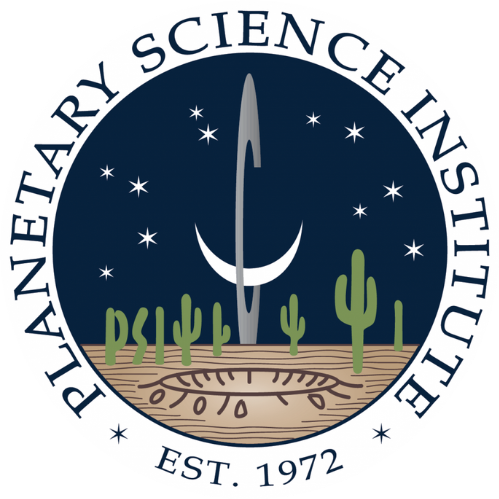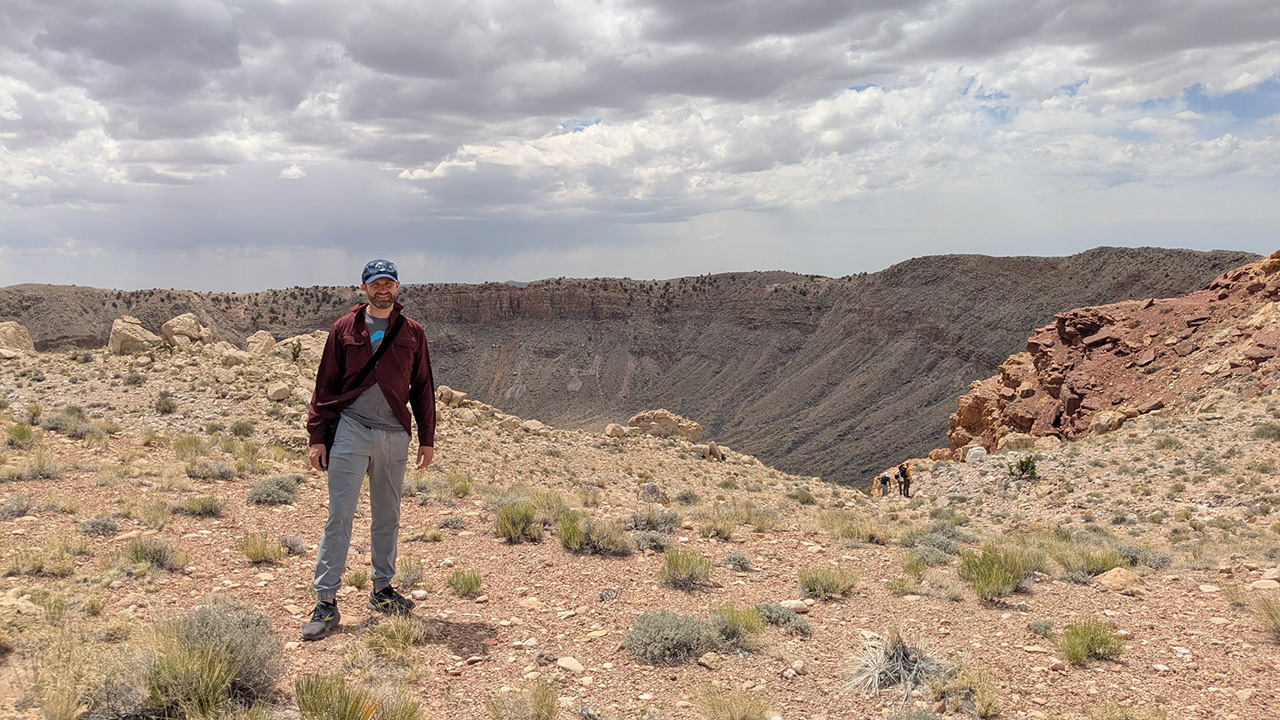PSI Research Scientist Kirby Runyon traveled from Washington, D.C. to Flagstaff, Arizona to participate in a cratering workshop from July 14-15 called ICAARUS, short for Impact Cratering and Associated Research United States. It was sponsored by Barringer Crater Company, the family-owned enterprise that preserves Meteor Crater.
“Meteor Crater is Earth’s best-preserved impact crater, and it’s our Rosetta Stone for understanding the geological and physical details of impact cratering in the universe. No other crater in the cosmos is more accessible to humanity than Meteor Crater,” Runyon said. “The physics of shock waves passing through rock; the overturned stratigraphy on the crater rim; the avalanche from the sky that created the expansive ejecta deposit around the crater; the rocky rubble injected between layers in the crater wall and causing layers to up-bow; how tectonic faults affect the Crater shape; it’s all here. And it has been, and continues to be, a perfect place for astronauts to practice exploring lunar geology, from Apollo to Artemis.”
About 20 scientists attended the event, which included talks about the state-of-the-art in understanding the geology and physics of impact cratering on Earth and around the Solar System from the perspectives of field mapping, computer modeling, experimental and petrological perspectives. The workshop also included a guided hike to the floor of Meteor Crater to observe exposed geologic features and time to brainstorm the needs for the impact cratering scientific and educational communities.
“I think we’ll soon see a new, weekly impact cratering list-serv/newsletter focused on impact cratering for the planetary science community, and hosted by the Barringer Crater Company,” Runyon said. “One emphasis often ignored by both the National Science Foundation and NASA is studying Earth’s impact craters for their own sake and not as a planetary analog. This ethos would be reflected in the anticipated announcements and opportunities on this new community resource.”
Institutional representation included the Southwest Research Institute and Johns Hopkins University Applied Physics Laboratory were also represented, as were various universities, such as the University of Western Ontario, University of Colorado Boulder, Northern Arizona University and others.
“I see this all as very positive, and I’d love for Meteor Crater and The Barringer Crater Company to have an elevated profile in the planetary science community,” Runyon said. “It represents support of planetary science that is independent of the government.”
Runyon was able to participate in the workshop because of funding from NASA (SSW 80NSSC21K0150) and travel funding from the Barringer Crater Company.

